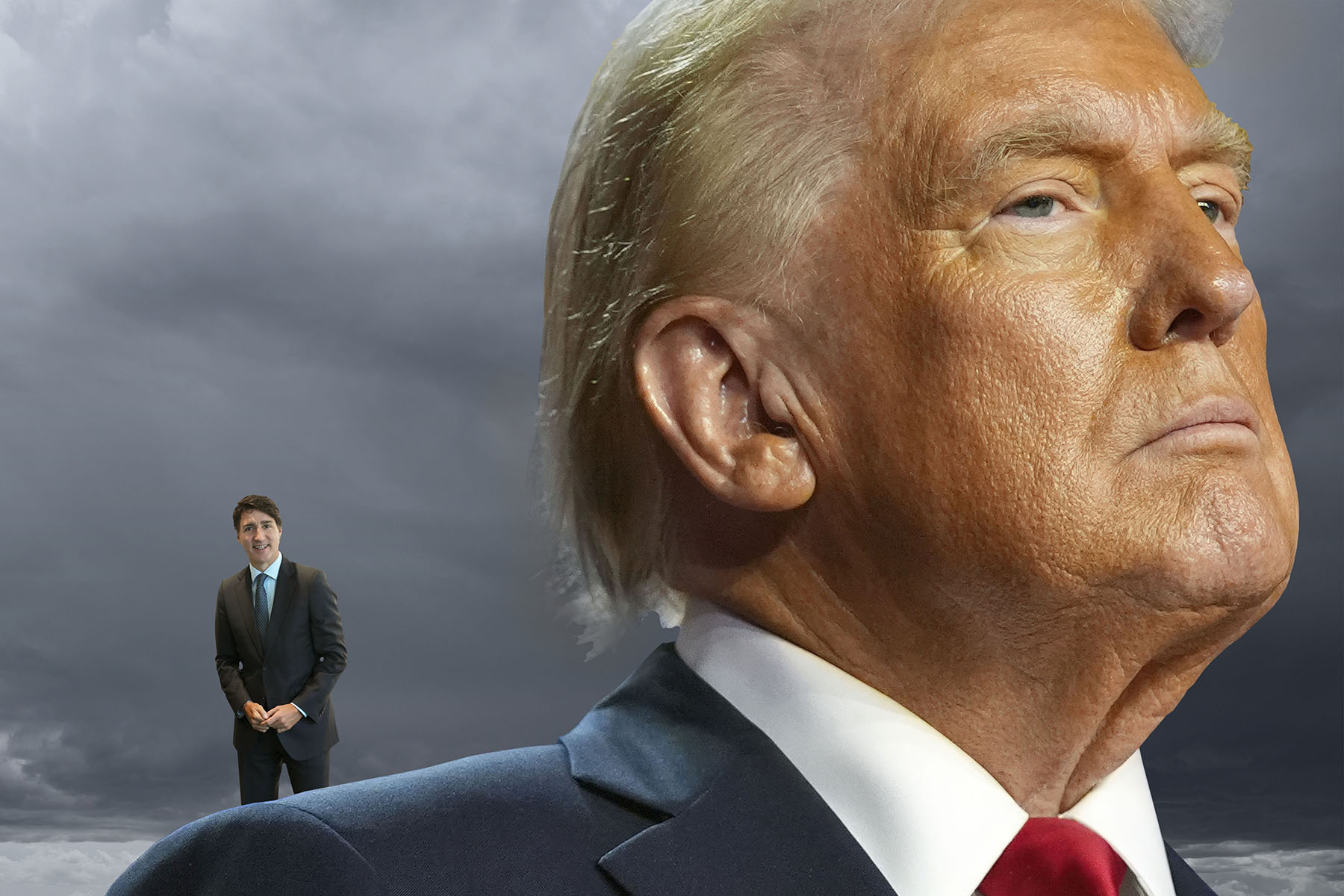The road ahead will not get any easier for the Trudeau Liberals. With Donald Trump set to retake residence in the White House in January—likely backed by Republican majorities in the Senate and House of Representatives—a weakened Liberal government in Ottawa will have its hands full during what polling indicates may be its final months in power.
Leger released its latest federal poll in early November, containing no positive news for the incumbents. The poll’s top line shows a dominant Conservative Party with a lead of sixteen points in voting intentions, with the Conservatives at 42 percent against the Liberals at 26 percent. (The poll was fielded from November 1 to 3, 2024, with a sample of 1,549 Canadian respondents.) While 26 percent represents the higher end of current confidence levels for the Liberals, Leger recorded a crushing twenty- and twenty-five-point advantage for the Conservatives over the Liberals in Ontario and British Columbia respectively.
In Quebec, supposedly the Liberals’ last bastion, the Bloc Québécois remains on top with 36 percent support, eleven points ahead of the Conservatives (at 25 percent). The Liberals sit at just 24 percent in Quebec, a ten-point drop from their 2021 election result in the province. With these numbers, the Liberals could face a near wipeout in Quebec.
Nationally, if Leger’s numbers were to translate to votes in next year’s federal election, Pierre Poilievre’s Conservatives would likely form the largest parliamentary caucus in Canadian history. The largest caucus ever so far has been that of the Brian Mulroney Progressive Conservatives in 1984, with 211 seats. In absolute terms, the Conservative Party has been projected to end up at or above that mark for many weeks now.
The Liberals would face a close race with the Bloc Québécois for official opposition, while Jagmeet Singh’s New Democratic Party could also suffer losses of seats, depending on their performance on the West Coast. With a bad campaign or turnout for the Liberals, the Bloc could potentially finish ahead of them in terms of seats.
This newest Leger poll aligns with the trend seen in federal polling over the past year (see full list here), supported by extensive data from reliable sources. Whether reflecting “satisfaction” or “approval” of the federal government, poll results consistently spell trouble for the Liberals. In Leger’s latest: “Are you very satisfied, somewhat satisfied, somewhat dissatisfied, or very dissatisfied with the Canadian government led by Justin Trudeau?” Total satisfied: 27 percent (with a measly 5 percent “very satisfied”); total dissatisfied: 68 percent. Net satisfaction of minus 41.
Abacus Data (fielded from October 31 to November 5, 2024, with a sample of 1,915) found similar results: “Overall, do you approve or disapprove of the job the federal government led by Justin Trudeau is doing?” Approve: 25 percent, disapprove: 61 percent—a net approval of minus 37.
From the Angus Reid Institute (fielded from October 24 to 26, 2024, with a sample of 1,627): “Overall, do you approve or disapprove of the performance of Prime Minister and Liberal Party leader Justin Trudeau?” Approve: 29 percent, disapprove: 67 percent—netting a minus 38.
It may feel like piling on, but different polling firms using different panels and methodologies all reach the same overall trends.
I’ve been repeatedly asked by journalists and political staff whether a renewed Trump mandate in the White House, with the economic uncertainty it could bring, might improve Liberal fortunes. I am not in the opinion business and generally adhere to the scientific maxim that “extraordinary claims require extraordinary evidence.” So let’s look at recent data.
In a mid-October poll, Leger asked Canadian voters: “If you could vote in the U.S. election, would you vote for Kamala Harris or Donald Trump?” The national result offered no surprise: 64 percent of Canadians preferred Harris, with just 21 percent for Trump and 15 percent undecided. Across all regions, age groups, and genders, Harris was favoured by at least close to a two-to-one margin.
Breaking down by Canadian federal voting intentions, the data showed Liberal, New Democratic, and Bloc voters to be overwhelmingly in favour of Harris. Among Conservative voters, however, the results were split: 45 percent Trump, 42 percent Harris, and 13 percent undecided. Among decided Conservative voters, the split was 52 percent Trump to 48 percent Harris.
This raises the question: Could the Conservative “big tent” divide if things go awry with Trump at the helm? It’s possible, but data from 2020 showed 41 percent of Conservative supporters favoured Trump over Biden, so this phenomenon isn’t new—and yet the Conservative coalition has endured. If we ask, instead, which leader people think is best suited to handle a second Trump mandate, the data clearly points to Poilievre.
The Angus Reid Institute asked its respondents: “Which Canadian political leader would be best at managing Canada’s relationship with the United States if Donald Trump were president?” Nationally, 38 percent favoured Poilievre, fifteen points ahead of Trudeau. Regionally, Poilievre led Trudeau in all provinces (yes, even in Quebec), across genders and age groups.
While we must interpret hypothetical polling numbers with caution, nothing in the currently available data suggests the Trudeau Liberals would gain from a second Trump term. Liberals will rightly argue they have experience dealing with Trump, but they did so in an entirely different political context. For most of Trump’s first term, the Liberals held a majority in the House of Commons and enjoyed high approval ratings—not to mention Trudeau’s strong personal numbers, which are now long gone.
In conclusion, could the Liberals somehow gain politically from Trump’s return? Perhaps, but no current data supports this hypothesis. There is no empirical evidence from recent months to suggest Canadians would suddenly rally around an increasingly unpopular prime minister leading a government worn down by nearly a decade in power, regardless of who holds the keys to the White House. But as the saying goes: hope springs eternal.





